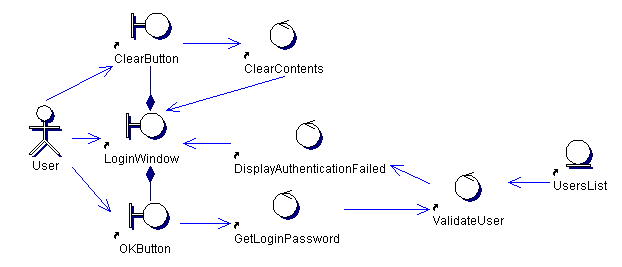|
|
|
Robustness analysis is the link between the use case diagram and the sequence diagram that we describe next. It is the link between analysis – the what – and the design – the how. This sort of analysis is an examination of the logic of the behaviour of the system, an examination of completeness, a discovery of new objects and an initial design. By analyzing the use cases descriptions from the previous step we try to categorise the objects that participate in the use case into three object categories:
·
Boundary objects: objects that actors of the system
communicate with. These objects are usually windows, menus, dialog boxes etc. 
·
Entity objects: they refer to persistent objects,
i.e. database tables or files that need to store information that will exist
beyond the program’s completion. ![]()
·
Control objects: they contain all the logic of the
application. They constitute the links between boundary objects and entity objects.
They are usually implemented as methods that are related with the other object
types. 
The rules that apply to a robustness diagram are the following:
1. Actors may communicate only with boundary objects.
2. Boundary objects may communicate only with control objects and actors.
3. Entity objects may communicate only with control objects.
4. Control objects may communicate with entity objects and boundary objects but not with actors.
An example of a robustness diagram is shown in Figure 8 .

Figure 8 Example robustness diagram